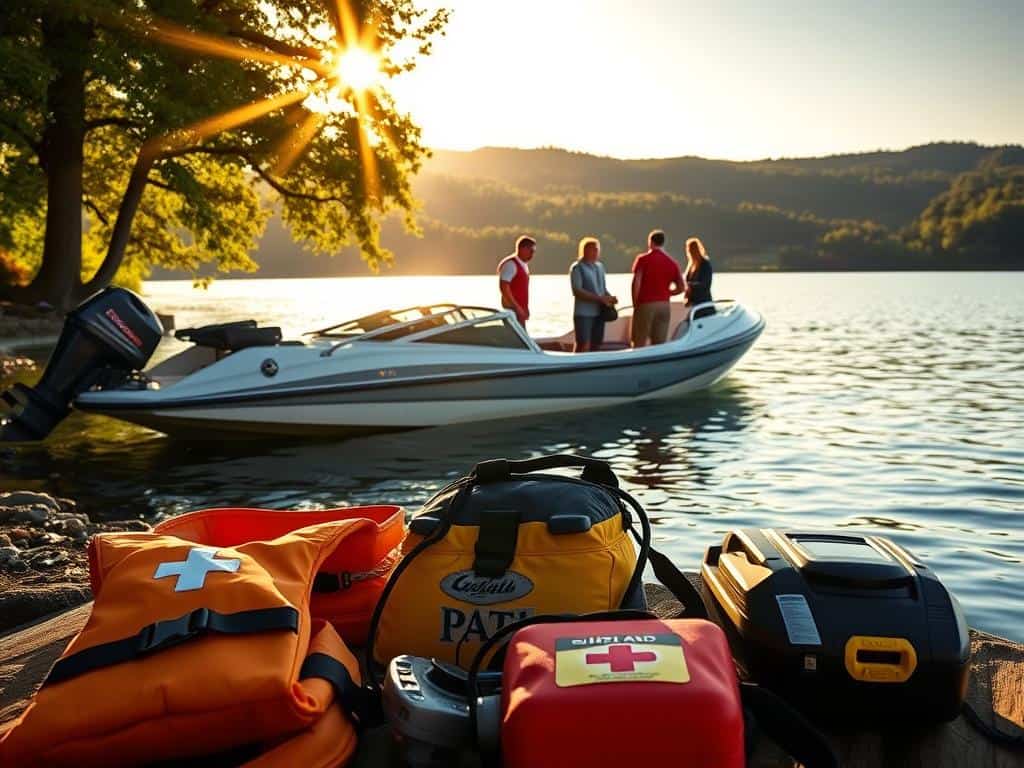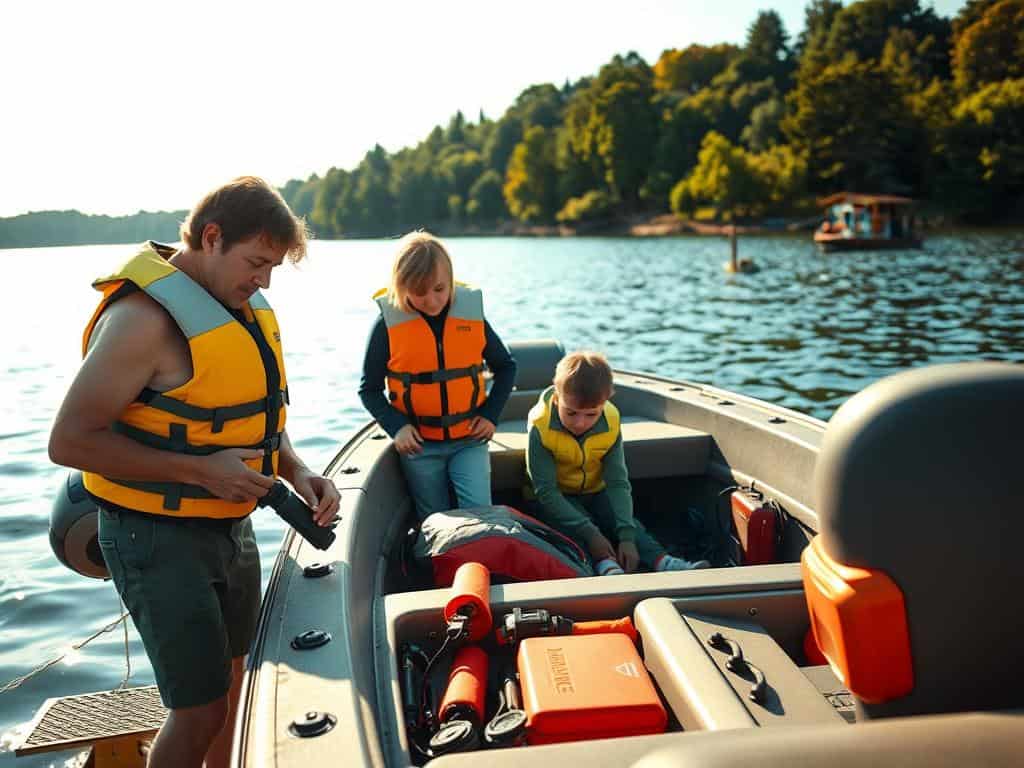As the sun dipped below the horizon, casting a gold hue over the water, I couldn’t help but admire the serenity of that day on Lake Michigan. My friends and I were anchored, enjoying a peaceful sunset cruise when suddenly, a loud bang pierced the calm. Our boat jolted, and panic set in as we realized we were taking on water.
What I once thought was a casual outing transformed into a harrowing experience. It sharpened my understanding of boating safety and the critical importance of emergency preparedness. That incident ignited my passion for obtaining boater safety certification. It also taught me the necessity of knowing how to react when things go wrong.
Key Takeaways
- Always have a float plan before setting out on a journey.
- Prepare an emergency kit with essential supplies.
- Familiarize yourself with distress signals and their meanings.
- Stay calm and assess the situation before acting.
- Utilize distress beacons and radios effectively in emergencies.
- Knowing how to call for help can save lives.
Understanding Boating Safety and Preparation
Boating safety is key for a great time on the water. Being prepared can greatly improve your safety. This includes making a float plan, having an emergency kit, and knowing how to send distress signals.
The Importance of a Float Plan
A float plan is a must for boating safety. It lists your trip details, like where you’re going and when you’ll return. If something goes wrong, a float plan helps rescue teams find you fast. Knowing help is on the way makes me feel safer before I go.
Creating an Emergency Kit
An emergency kit is your lifeline in bad times. It should have life jackets, flares, a VHF radio, and a PLB. Having a ready-to-go bag means I can react fast in emergencies. Many lives have been saved because of being prepared.
Knowing Distress Signals
Knowing how to send distress signals is critical. You need to know how to use verbal, visual, and electronic signals. Tools like an EPIRB or PLB send alerts to authorities. Many have been saved by using these signals. Knowing how to communicate in emergencies makes me more confident on the water.

What to Do During Sea Emergencies
Being ready for sea emergencies can save lives. It’s key to know when something’s wrong with your boat. Look out for signs like unusual tilting or slow movement, which might mean water is getting in.
Also, watch for weather alerts. They can help prevent small problems from getting worse.
Recognizing Signs of Trouble
Every time I go out, I pay closer attention to danger signs. Changes in the weather can be a big deal. I keep an eye out for storm clouds or rough seas.
Spotting these signs helps keep me and others safe.
Utilizing Distress Beacons and Radios
In a real emergency, using distress beacons and radios is critical. They send out my location and a mayday signal to help. Having reliable gear is vital, as it can lead to successful rescues.
How to Properly Call for Help
When it’s time to call for help, being clear is important. Start with “MAYDAY” three times, then say your boat’s name and the emergency details. This helps authorities act fast.
Make sure your radio is set to the right frequency. This simple step can be a lifesaver.
Conclusion
Boating safety is all about being ready for emergencies. I’ve learned that starting with a float plan is key. Also, having a good emergency kit and knowing distress signals are vital.
Survivor stories show how important knowledge and prep are. Every trip should begin with a safety-first mindset. Safety courses help build confidence and prepare us for emergencies.
I want to urge all boaters to focus on safety and being prepared. This way, we can enjoy our time on the water more safely. It’s a small step that can save lives when we need it most.



